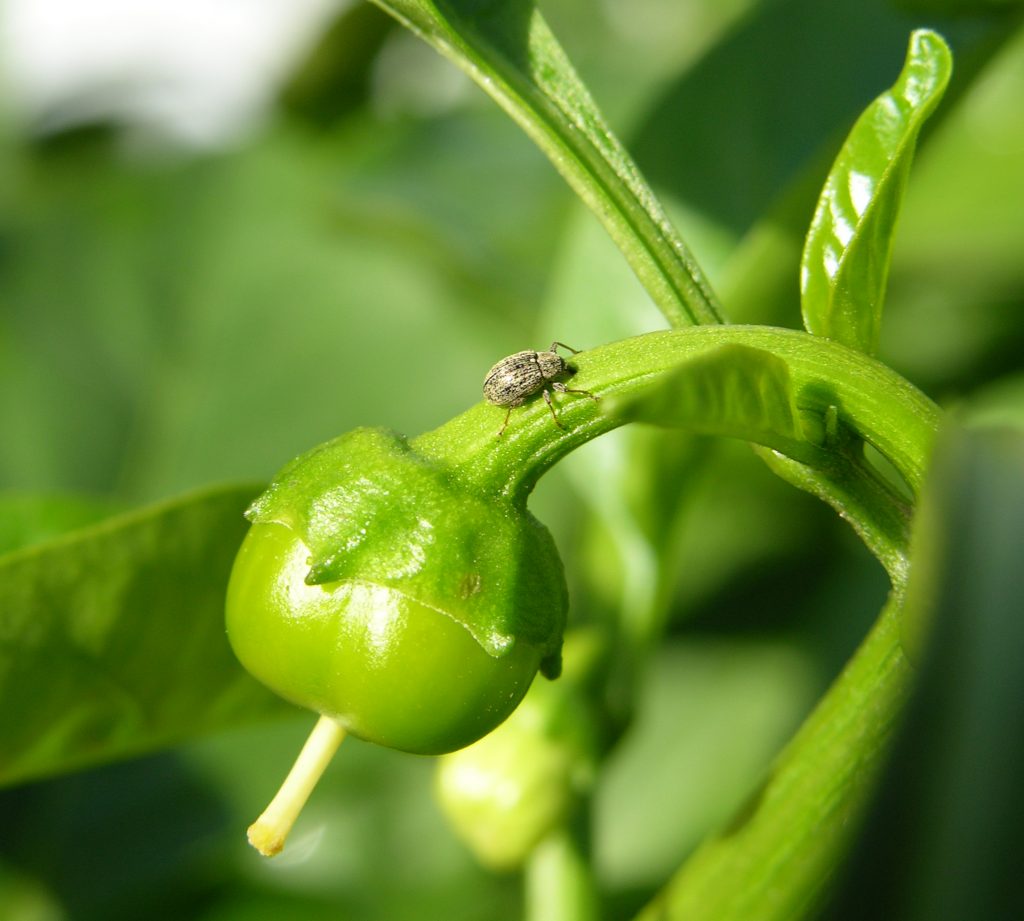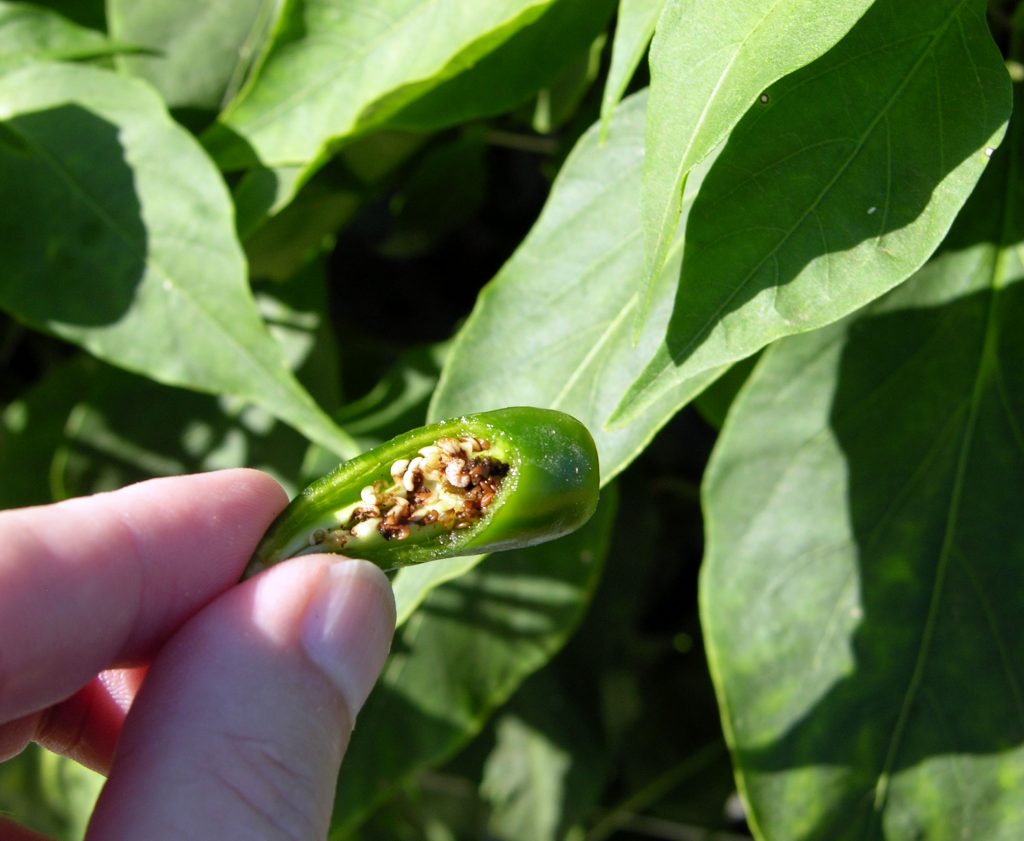By David Riley and Alton Sparks
The pepper weevil (Figure 1) is one of the most serious pests of peppers in the Americas. This weevil was introduced into the United States from Mexico as early as 1904(Elmore et al., 1934).

The weevil can effectively shut down pepper production if not controlled early enough in the growing season. Even with the few available insecticides properly used, losses can still be severe.
PEST SURVIVAL
Pepper weevil does
not exhibit diapause, which means it needs to feed continuously on its limited
host range (Capsicum spp. and Solanum spp.) to survive and reproduce
(Riley and King, 1994). Fortunately, much of the United States (Zone 8 and
lower in the U.S. Department of Agriculture Plant Hardiness Zone Map) has cold
enough winters to kill off its host plants. This has traditionally limited the
northern spread of the weevil and kept it in peppers grown in southern Florida,
Texas, California and Arizona.
However, over the past two winters, researchers have documented overwintering of adults in old pepper fields where food was available. Even in areas where survival of pepper weevil host plants occurs, it is beneficial to eliminate host plants between seasons to attempt a local eradication of pepper weevil for the next season. Elimination of overwintering host plants should work to starve out the pepper weevil at a given location if there are no new weevils being reintroduced after the cleanup has occurred.
REINTRODUCTION FROM IMPORTS
Unfortunately, reintroduction
through infested pods has occurred in several reported cases in the United
States and abroad. A recent case reported in New Jersey (Ingerson-Mahar, 2015) clearly
demonstrated that new pepper weevil infestations were associated with
packinghouses (i.e., peppers being shipped in and repacked, and damaged fruit
being culled and dumped locally.) Since the pepper weevil is endemic to Mexico
and most of the fresh pepper imports in the United States are from Mexico, this
is likely the main source of annual reintroduction of this pest in the United
States.
How much does the United States import each year? Fresh market peppers from Mexico exceeded 242,000 metric tons from November 2007 to May 2008. In Mexico, pepper weevil is endemic and difficult to control with insecticides (Servín-Villegas et al., 2008). Thus, exportation of pepper weevil grub-infested pods (Figure 2) from Mexico to the United States in the winter and early spring can mean early infestations of this severe pest just as domestic U.S. pepper production is getting started.
SPREAD PREVENTION
This annual pest re-introduction
through contaminated pods in fresh market shipping is preventable if the weevils
are detected early and steps are taken to prevent establishment or reduce
spread. The time of year when preventing these reintroductions is the most
critical is during early spring planting after a cold winter.
This “ounce of prevention” has the potential to prohibit a local infestation of pepper weevil from even occurring. Removing pepper weevil from the landscape could save growers the bulk of their insect control costs and prevent potentially devastating yield loss. Continued vigilance to prevent the movement of weevils between contaminated fields should have the same positive effect. Continued education and internal enforcement of farm sanitation could help prevent the spread of this serious pest each year between production sites.
David Riley and Alton Sparks are professors and entomologists at the University of Georgia in Tifton.
This article was featured in the July issue of VSCNews magazine. To receive future issues of VSCNews magazine, click here.
Share this Post










